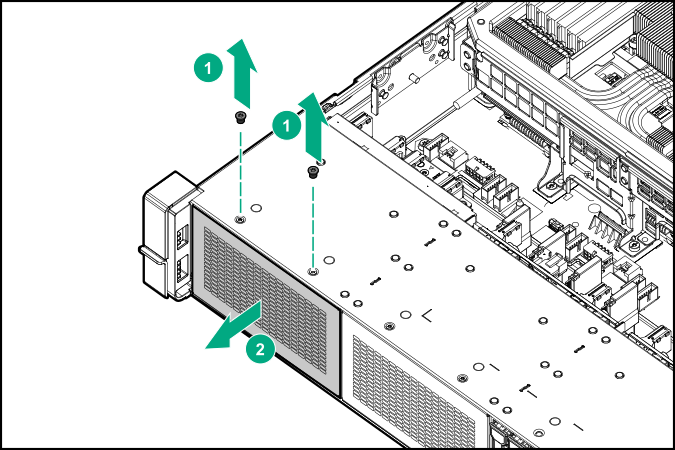The two-bay NVMe SSD/six-bay SFF HDD drive cage can be installed in the following drive box locations. For more information, see
Front panel components.
Drive box 1
Drive box 2
Drive box 3
Prerequisites
Before you perform this procedure, make sure that you have the following items available:
Procedure
-
Power down the server.
-
Remove all power:
- Disconnect each power cord from the power source.
- Disconnect each power cord from the
server.
-
Do one of the following:
-
Remove the access panel (Removing the access panel).
CAUTION: Do not operate the
server for long periods with the access panel open or removed. Operating the
server in this manner results in improper airflow and improper cooling that can lead to thermal damage.
-
If installed, do the following:
- Remove the air baffle (Removing the air baffle).
- Remove the processor mezzanine tray (Removing the processor mezzanine tray).
- Remove the CPU Mezzanine UPI performance kit (Removing the CPU Mezzanine UPI performance kit).
-
Remove the fan cage (Removing the fan cage).
-
Remove the screws, and then remove the drive bay blank.
-
Install the drive cage.
-
Route and connect the cables depending on the server configuration. For more information, see
Cabling.
-
If removed, do the following:
- Install the air baffle (Installing the air baffle).
- Install the processor mezzanine tray (Installing a processor mezzanine tray).
- Install the CPU Mezzanine UPI performance kit (Installing a CPU Mezzanine UPI performance kit).
-
Install the fan cage.
-
Install the access panel (Installing the access panel).
-
Install the server into the rack (Installing the server into the rack).
-
Connect each power cord to the
server.
-
Connect each power cord to the power source.
-
Power up the server.

